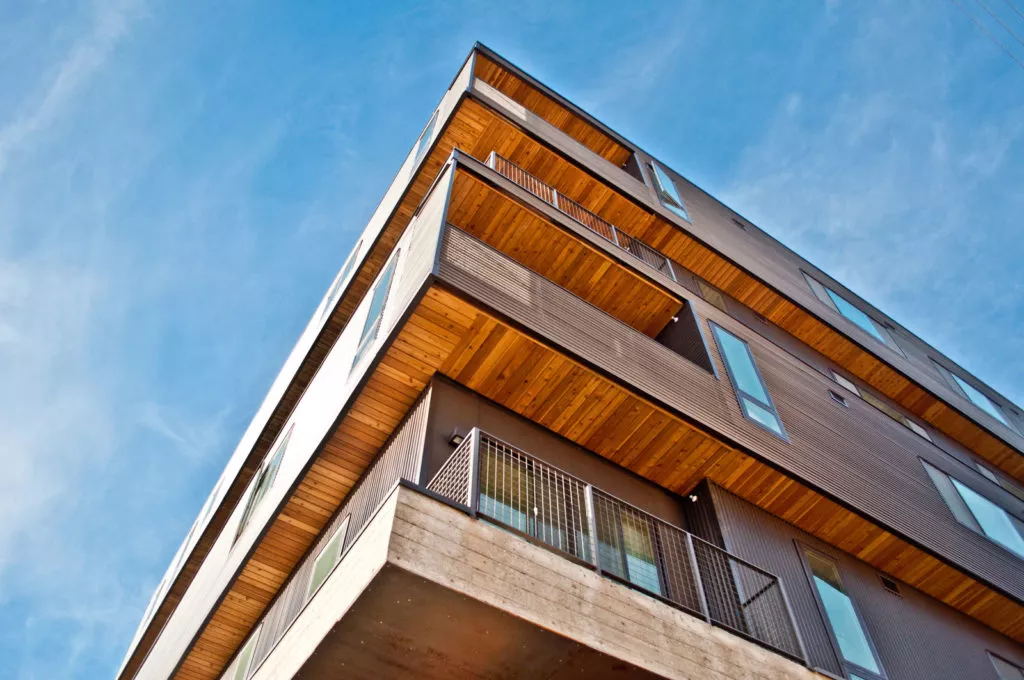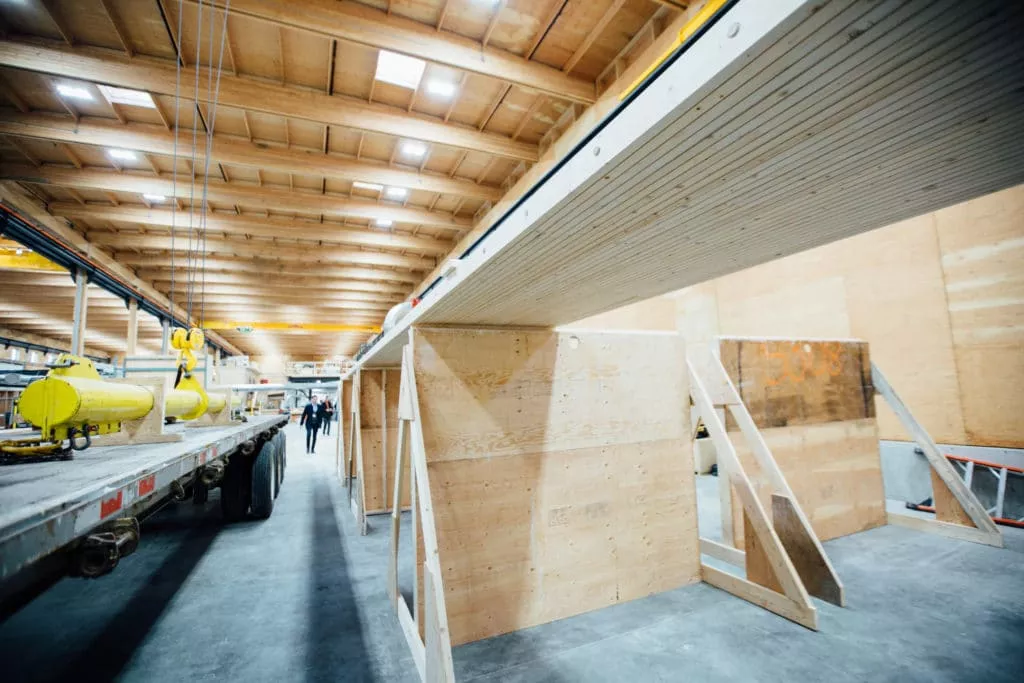All of these benefits help to meet demands from owners, designers and tenants for better buildings.
Goes Up in Days Rather Than Months

With MOTO, the panelized light frame wood wall system created a dramatic speed of construction that allowed each level to be framed in about a week and the entire project in less than a month. Architecture: Gensler | Photo: Ronnie Leone
Process efficiency is possible at every stage, from design to fabrication to construction. Detailed planning allows construction processes to be standardized and streamlined, including construction efficiency that meets aggressive schedules and decreases on-site assembly time. Sequencing is improved, as prefabricated components are sorted and loaded onto trucks, minimizing on-site handling. The process is also more integrated with better communication amongst parties, which reduces costly change orders. Because prefabricated components are produced in a controlled environment, quality and precision of components improve, fabrication productivity increases, safety for tradespeople improves and weather is not a factor in slowing down the construction process.
Less Waste, Less Redundancies

StructureCraft Builders | Thanks to prefabrication technologies, construction time was cut considerably and the wood portion of the building was assembled in about one week.
Budgets can be easier to meet because redundancies and waste in both materials and time are streamlined. Although building components can be more expensive up front, the complete installed cost is usually less because on-site construction is minimized. Material efficiency results because prefabricated components are made off-site and typically via modeling technologies that provide extreme precision.
Reduced waste both on- and off-site minimizes the environmental impact of a project, as specific sizes and dimensions of components are determined in advance and components are made or cut to tight specifications. This also relates to the sustainable nature of prefabrication.
From prefabrication to the latest in modular construction, learn how to design sustainable prefabricated wood buildings and earn credit.







